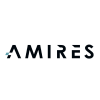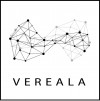13 Dec 2019
Our latest webinar on regulatory priorities within nanotechnology featuring NIA's Director of Regulatory Affairs, Dr David Carlander was held on December 10th. Watch here.
4 Dec 2019
The JRC has published a detailed report into the slow development of regulatory framework around nanomedicines, highlighting a common challenge in all emerging technologies, that science and applications accelerate far more quickly than the regulatory ecosystem in which they operate.
3 Dec 2019
ECHA has today, 3rd of December, published two guidance documents applicable for nanoforms of chemical substances under REACH.
20 Nov 2019
The EUON (European Observatory on Nanomaterials) hosted by ECHA, has a nano opinion section where EU-OSHA (European Agency for Safety and Health at Work) published on 12 November '
19 Nov 2019
The EC published a version 2 of the 'Catalogue of nanomaterials in cosmetics products placed on the market, as notified to the European Commission by Responsible Persons' on 15 November 2019
15 Nov 2019
NIA Member Solvay has written a Guest column in ECHA's latest newsletter 'Solvay’s view on new requirements for nanomaterials' published on 14 November.
Solvay has for a long time 'engaged in a proactive dialogue on nanomaterials with national authorities and European agencies to help clarify the data required for nanoforms that are placed on the...
13 Nov 2019
On 12 November ECHA held a webinar 'Getting ready for revised REACH information requirements for nanoforms'.
The webinar and slides presented are available at the ECHA webinar page.
10 Nov 2019
NIA Members have been busy winning prizes this autumn and we are delighted to celebrate with them!
Endomag (UK): Endomag won not one, but two prizes – will the winning never end? Winners at TechTrack100 for Best Management Team, headed by our very own Eric Mayes, CEO and 'Best Established Medtech Company' at the OBN Awards.
10 Nov 2019
Nanoplastics is a generic term increasingly being used to define materials that fall into the nanoscale, primarily as a result of disposal and degradation of materials from the larger scale.
8 Nov 2019
During the CARACAL meeting 6-7 November, several topics related to nanomaterials were raised.
NIA Members will find more information in the Members Area (log in required).
7 Nov 2019
caLibrate recently held a webinar to introduce caLIBRAte Nano-Risk Governance Portal - a state-of-the-art one stop shop site to support nano-risk governance
The Portal will provide:
7 Nov 2019
At its plenary meeting 30-31 the EC SCCS (European Commission Scientific Committee for Consumer Safety) adopted its revised new 'Guidance on the safety assessment of nanomaterials in cosmetics'. The Guidance should be used together with the general cosmetics guidance document (currently in its 10th revision).
30 Oct 2019
The caLIBRAte project has established a risk risk governance framework and web-based platform to support governance of existing and emerging manufactured nanomaterials and nano-enabled products.
23 Oct 2019
EHCA published today (23 October) its 'Draft Community Rolling Action Plan (CoRAP) update for years 2020-2022'
The list contains 76 entries where 60 substances are to be evaluated in 2021 and 2022 and 14 during 2020. In the list of substances, there are no initial grounds for concern for nanoforms of substances in particular. However, there are...
18 Oct 2019
The European Observatory on Nanomaterials (EUON) has published an open invite for interested parties to suggest topics for upcoming studies in the area of nanomaterials that can be as a desk top study during a 3-9 month time period. The suggestions should be submitted before 15 Jaunary 2020.
EUON states:
10 Oct 2019
ECHA recently provided additional information in a press release of 8 October related to nanomaterials and REACH.
From1 January 2020 additional information on nanoforms of substances will need to be provided in REACH dossiers.
The amendments of the REACH Annexes for nanomaterials (nanoforms) apply to all new and existing registrations covering...
8 Oct 2019
The process to publish the 'Appendix on recommendations for nanomaterials applicable to the Guidance on Registration and Guidance on Substance ID' is moving ahead where the latest version, shared with the September meeting of CARACAL is now publicly available (September version, pdf) at the ECHA Ongoing Consultation page.
30 Sep 2019
The European Chemicals Agency will host a webinar 'Revised REACH information requirements for nanoforms: are you ready?' on 12 November at 11:00 - 13:30 EET (GMT +2).



















